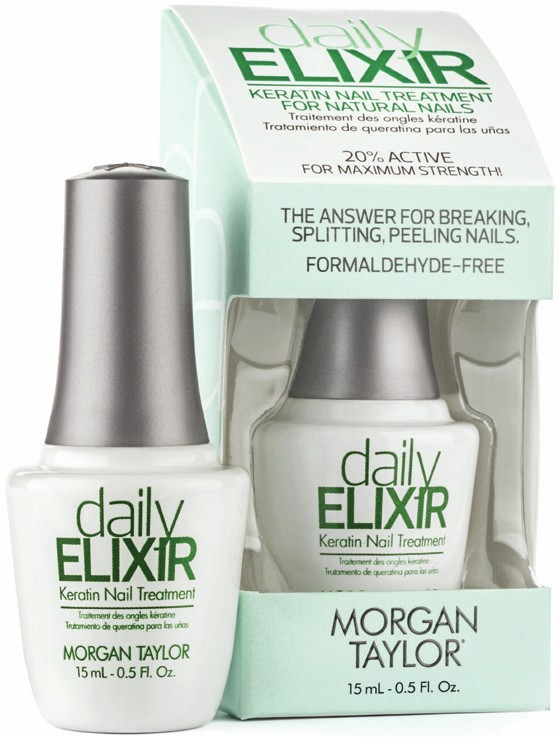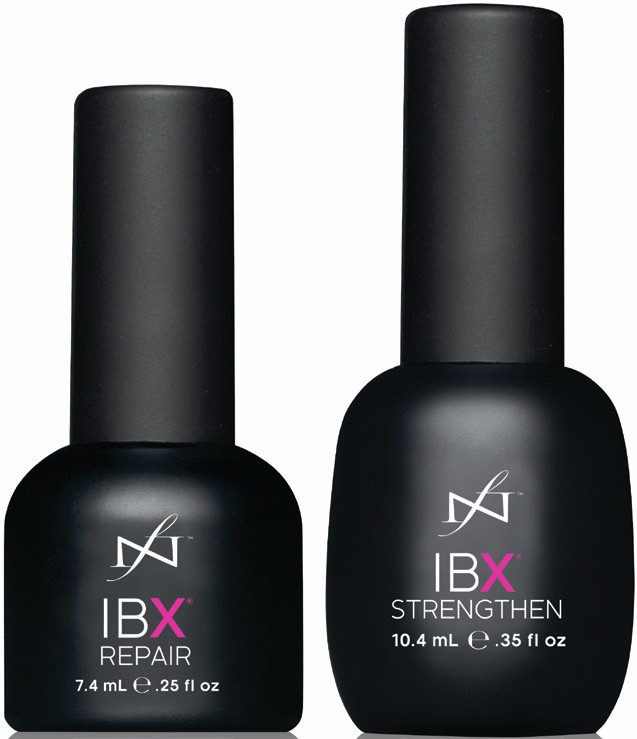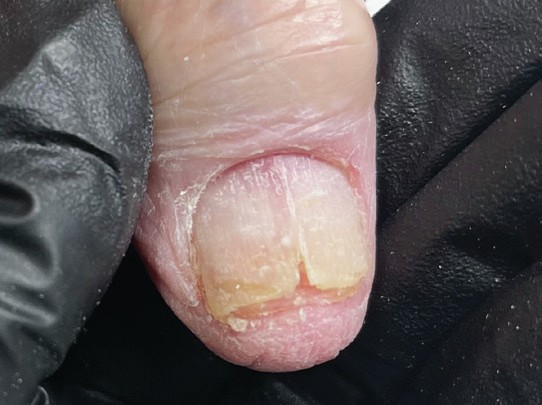HEALTH & WELLBEING
Menopause matters
REBECCA HITCHON marks World Menopause Month by sourcing insight on the life stage & tips to accommodate it in the nail space
THE IMPORTANCE OF ACCOMMODATING MENOPAUSAL SYMPTOMS
Not so long ago, it was uncommon to hear the word ‘menopause’ in the public domain – let alone without stigma surrounding it. Now, menopause is a much less taboo topic, however society still has progress to make until the stage of life is fully understood and accommodated.October marks World Menopause Month: an apt time to raise awareness and consider what can be done to benefit menopausal women year-round.

Tracy Munro
“Menopause typically occurs between the ages of 45 and 55, although can happen earlier, and involves a decline in hormone levels – which affects various aspects of a woman’s health,” explains Tracy Munro, the Mindful
Menopause Coach™ & BABTAC Beauty Collective member. She details that there are three main stages:
• Perimenopause: “This is the transitional phase leading up to menopause, often lasting seven to 10 years,” Tracy describes. “During this time, hormonal fluctuations can cause irregular periods and symptoms such as hot flushes, mood changes, joint pain or stiffness and nail health issues.”
• Menopause: “Menopause is marked by the anniversary of 12 consecutive months without a period,” Tracy continues. “It signifies the end of a woman’s reproductive years, and can see the continuation of many symptoms of perimenopause.”
• Postmenopause: “This phase begins the day after menopause and continues for the rest of a woman’s life,” says Tracy. “Women can spend a third of their lives in this stage, and while some symptoms may lessen, others – like increased risk of osteoporosis (weak and brittle bones) and changes in skin and nail health – can persist.”
“Be respectful, mindful, ready to chat and listen, and be open to making amendments to services.”

Avril Kealy
“Service-based businesses can greatly impact how clients feel about their changing bodies,” reveals Avril Kealy, digital content strategist at Phorest Salon Software. “Providing high-quality and relevant services to these clients can make them feel comfortable and valued, boosting loyalty and retention.”
Tracy Munro adds: “Beauty professionals are often trusted confidants for their clients, so by acknowledging and accommodating menopausal needs, you provide a vital source of emotional and physical support. This can create an environment that celebrates the strength and resilience of women during this stage of life. Embracing menopause not as an end, but as a powerful chapter of transformation, contributes to the reshaping of societal perceptions and empowers women.”

“Until I began to experience the menopause and studied it, I thought it was just a few mood swings and the odd hot flush – however in reality, there are over 35 symptoms: many of which are cognitive or psychological,” shares Sue Davies, nail industry veteran. The Scratch Stars Services to the Nail Industry winner 2017 has added a menopause Sue Davies qualification to her portfolio, so she is able to offer menopausal wellbeing services. “Suicide rates for women aged 45 to 54 – the most common ages for perimenopause and menopause – have risen by 6% in 20 years, according to the Office for National Statistics (ONS),” Sue adds. “Nail and beauty businesses can offer safe spaces for women to discuss their experiences and alleviate menopause symptoms.”
PHYSICAL CHANGES
The science behind them

Dr Berrin Tezcan
“Nail changes caused by the menopause are likely to be associated with low oestrogen levels and dry skin,” explains Dr Berrin Tezcan, consultant obstetrician, gynaecologist & CEO of Grosvenor Gardens Healthcare. “During or after menopause, the body may not produce enough keratin: the substance that nails require to stay strong, which can lead to brittle, weak nails that break easily.
“Other common symptoms include tingling in the hands, feet, arms and legs – often for a few minutes at a time,” Dr Tezcan continues. “This is a result of hormone fluctuations affecting the central nervous system, and professionals or clients experiencing this will benefit from small breaks. Hot flushes are also common due to hormonal changes, and can be helped with an air-conditioned environment and tissues to hand.”

Lucy Price-Marshall
“Changes to hormones can affect the newly forming nail at the matrix, but there will only be a noticeable impact if these are long-lasting changes,” adds Lucy Price-Marshall, Scratch Stars Natural Nail Specialist of the Year 2024 & OPI freelancer. “This is why the menstrual cycle does not impact nails, but pregnancy and menopause can.”
Nail talk
“I have seen clients’ nails become drier and more brittle postmenopause, which I treat via regular maintenance appointments that include hydrating elements,” Lucy shares. “This brittleness can make nails more prone to breaks, so I recommend opting for a softer shape to prevent nails catching. Changes to the texture of nails are also very common as oestrogen levels drop, and clients can develop onychorrexis (vertical ridges), which may require an overlay for strength and protection.
I’ve also seen nails and cuticles become oily and wet during perimenopause and menopause, which can cause nail lifting for clients that have previously not had retention issues.”

Claire Blincoe
“As menopause affects women in many different ways, the body doesn’t prioritise nails, skin and hair, and diverts nutrients to other places that it thinks need them,” comments Claire Blincoe, Gelish master educator. “Personally, this has been one of the most frustrating aspects of menopause. My nails, which were previously strong, are now thin. Applying a moisturising hand lotion and hydrating cuticle oil is beneficial, and I use Morgan Taylor’s Daily Elixir Keratin Treatment to tend to extremely dehydrated, weak nails.”
“Over the years, I’ve witnessed deep vertical splits on the nails of menopausal clients, along with brittleness, related to dryness of the body caused by hormone changes,” Sue Davies recalls. “Providing treatments, such as IBX from Famous Names or OPI’s Repair Mode™, supports healthy natural nails.”

Morgan Taylor Daily Elixir Keratin Nail Treatment
£7.50 + VAT www.gelishmorgantaylor.co.uk

Famous Names IBX Treatment Duo Pack
£46.95 + VAT www.sweetsquared.com

OPI Repair Mode™ Bond Building Serum
£18.90 + VAT/RRP £29.90 uk.wella.professionalstore.com “There are over 35 menopause symptoms: many of which are cognitive or psychological.”

Images courtesy of Lucy Price-Marshall, showing the impacts of menopause on nails.

Erin Searle
“I find that builder gel and acrygel enhancements provide strength to the weak nails of menopausal clients,” adds Erin Searle, Katie Barnes product & social development manager. “I also advise regular maintenance appointments and to keep nails short, as well as aiding hydration and relaxation with moisturising massages at the end of treatments. These could be cooling massages for those suffering with hot flushes.” The nail artist & educator experienced early menopause after undergoing a partial hysterectomy due to endometriosis, followed by ovary removal. “Navigating this without adequate support from GPs has been difficult; I was misdiagnosed with depression and prescribed antidepressants instead of hormone replacement therapy (HRT),” Erin shares. “I have had a lot of support from clients who have experienced menopause, which led to me seeking further help.”
Body changes
“My menopausal clients and I talk openly about the various health issues caused by our changing hormones, such as brain fog, overwhelm, hot flushes, joint pain, insomnia, weight gain and changes to hair, skin and nails,” says Claire Blincoe. “I have an ice block ready to wrap in towels and place clients’ hands on when they have hot flushes, and a fan behind my client chair. I also send out reminders on the morning of clients’ appointments, to help those experiencing brain fog, and have a range of herbal teas and decaffeinated drinks available, as caffeine can worsen menopause symptoms.”
Treatment upgrade tip
Avril Kealy suggests: “If your business offers a variety of beauty services, consider menopause-friendly upgrades to treatments. You could include these in a package. For example:
• Soothing scalp massages and treatments designed for thinning hair.
• Moisturising facials that combat dry skin.
• Massages to clear the mind and aid relaxation.
• Aromatherapy and other sensory treatments to reduce stress.
• Menopause-friendly retail products.”
OFFERING EMOTIONAL SUPPORT
“The menopause can bring about significant changes that impact mood and mental health, such as feeling emotional, exhausted, anxious and less confident. Lack of sleep due to symptoms can heighten these feelings,” shares Dr Berrin Tezcan. “If someone experiencing a stage of menopause has mood swings, they might seem annoyed or impatient, but this isn’t deliberate, so try to be understanding.
It may help to view this as what the person is going through, rather than who they are. To reduce anxiety in clients, it can be beneficial to explain their estimated treatment times and the steps involved in their appointments.”
“If your business environment is friendly and comfortable, clients feel able to share their experiences,” details Lucy Price-Marshall. “Be respectful, mindful, ready to chat and listen, and be open to making amendments to services, such as omitting heated boots in pedicure services. Discussing clients’ needs in their consultations helps to tailor their services and offer additional support. My clients discuss how their moods can be affected, so some days we have quiet appointments and on other occasions, we chat.”
Avril Kealy stresses the importance of consultations, noting that every person is affected differently by the menopause, so the consultation process allows you to understand a client’s unique needs. She provides examples of questions to ask a menopausal client during a consultation:
• “How are you feeling today? Are there any specific areas or concerns you would like to address during the treatment?
• Have you experienced any changes to your nails?
• Is there a specific scent, music or ambiance that helps you feel most comfortable?
• Is there anything I can offer, like a drink, snack, breaks or open window, to help you feel more comfortable during your treatment?
• Is there anything else you would like to discuss, to ensure I provide the best possible experience and results?”
“It is crucial to promote an open environment. I have previously struggled during appointments and felt overwhelming emotions, holding these in and sitting in silence, then bursting into tears when the client left,” shares Erin Searle. “Now, I am completely open with my clients, which has led to me learning a lot about the menopause from those who are experiencing it. I don’t feel alone anymore.”
“Embracing menopause not as an end, but as a powerful chapter of transformation, contributes to the reshaping of societal perceptions and empowers women.”
Employee pointers
“Managers should be confident and knowledgeable when supporting team members experiencing menopause symptoms,” says Lucy Price-Marshall. “The Equality and Human Rights Commission (EHRC) has this year released guidance for employers on managing menopause in the workplace. It covers recording menopause-related absence, flexible working and creating a comfortable physical environment by considering ventilation, uniform and breaks.”
Getting educated
“Becoming educated about the challenges experienced by menopausal clients means that professionals can offer more informed and relevant services,” comments Avril Kealy. “Why not invite a menopause expert into your business environment to host a talk or masterclass?Better yet, open this up to the local community so more people can be educated, while establishing your business as one that’s reliable and supportive. If this isn’t feasible, share online resources with your team, such as articles, videos or training programmes.”
Tracy Munro offers menopause training, including the free Mastering Menopause Mini Course. Taking five days to complete, it features five video modules offering a comprehensive understanding of menopause, seven steps to confidently recommend tailor-made journeys, an empowering meditation and four editable workbooks. Tracy’s full course, The Ultimate Guide to Menopause for Skin Professionals, dives deeper into skin-specific care.
Sign up to Tracy Munro’s courses via www.mindful-menopause-coach.com and email tracy@tracy-munro.com with any questions.
Promoting a menopause-friendly setup
“Awareness starts from openly talking about changes related to menopause, so businesses could mention these on their websites and share articles explaining impacts,” advises Dr Berrin Tezcan.
Marketing materials also need to be considered, adds Avril Kealy. “It can be easy to fall into the habit of only showing young and stereotypically attractive people in marketing materials, but be sure to represent people of all ages in your content,” she recommends. “Messaging like this not only helps to break stigmas surrounding menopause, but creates a safe space where clients feel validated, valued and empowered.”
“When employees are educated on the effects of menopause, display signs in your workspace to demonstrate that staff have this knowledge,” suggests Erin Searle.